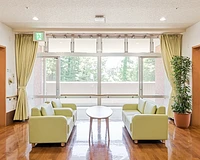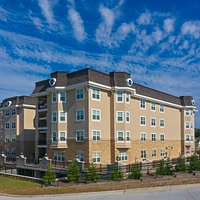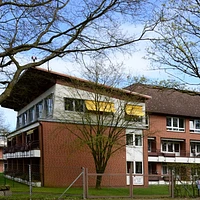Protecting Residents and Staff through Expert Fire Protection in Residential Care Homes
Protecting both residents and staff from fire is of utmost importance in care environments.
We can help give your organisation peace of mind, by assessing, installing and repairing your buildings passive fire protection, making sure any risks are managed, and your buildings occupants are safe.
Why is fire protection so important in residential care homes?
Care homes can have thousands of residents, with many residents having limited mobility or need assistance in emergencies.
This means evacuations often take longer - and fire compartments need to hold back the spread of fire for longer.
Plus, with many portable electrical appliances being used across bedrooms and kitchens at the site, the threat of fire in a care environment is something which needs to be taken very seriously.

What grade of fire doors are required in a care home?
Because of the residents' additional needs, care facilities often follow a Phased Horizontal Evacuation strategy, moving residents to adjacent fire-safe zones before full evacuation.
By moving the residents to safe compartments within a building, more time can be bought for people with limited mobility to reach safe spaces.
However, for this approach to work, fire doors must be correctly specified, properly fitted and well maintained to meet all necessary regulations. Most residential care settings require FD30 rated doors (30 minutes of fire resistance), with FD60 doors often needed in higher-risk areas. All fire doors must also include cold smoke seals, appropriate hardware and locks that open easily from inside.

Care home fire safety regulations
Fire safety in care homes was first legislated within the 2001 Care Home Regulations Act.
Subsequently, alongside all other UK organisations, it was further outlined in the Regulatory Reform (Fire Safety) Order 2005, with additional guidance in Approved Document B and British Standard BS 8214. This document states that in the event of a fire, an organisation must have a designated responsible person, and if this person is found to be negligent in any way, they can even face legal ramifications.
Our experience and expertise can help - by working with you, we can shoulder some of the responsibility that comes with being an organisation's responsible person, making sure that you remain compliant.
Specialist fire doors for care homes
Fire doors are heavy and should normally be kept closed, however this poses problems for some residents in care environments, as they might not have the strength to open the doors independently.
After working in care contexts for over a decade, we understand the accessibility requirements that residents need, and so we can install extra hardware that makes our fire doors easier to operate.
This is usually done with door closers, holders and retainers, which when used in combination, make fire doors far easier to use, eliminating the risk they may be left open by mistake.
How to prevent fires from spreading in care homes
Because care homes contain so many separate rooms and corridors, proper fire stopping goes beyond just fire door installation.
Any gaps around pipes, ducts, and cables where fire and smoke could pass between rooms or floors must be sealed - after all, smoke can be just as fatal as fire, if allowed to spread internally. Fire-resistant materials should also be used to fill voids in walls, ceilings and service risers. In care homes, this includes paying close attention to en-suite bathrooms, shared spaces and lift shafts.
Keep your care home compliant with Pre-Planned Maintenance (PPM)
Our PPM packages give care providers a better way to manage fire door compliance. With regular servicing, you stay ahead of compliance - while protecting your budget from avoidable surprises.
-
Protect your budget from surprises
Our scheduled approach means fewer emergencies and better forecasting
-
Catch issues before they escalate
We resolve minor issues before they cause compliance failures
-
Reduce long term repair costs
Regular maintenance reduces the need for major replacements


